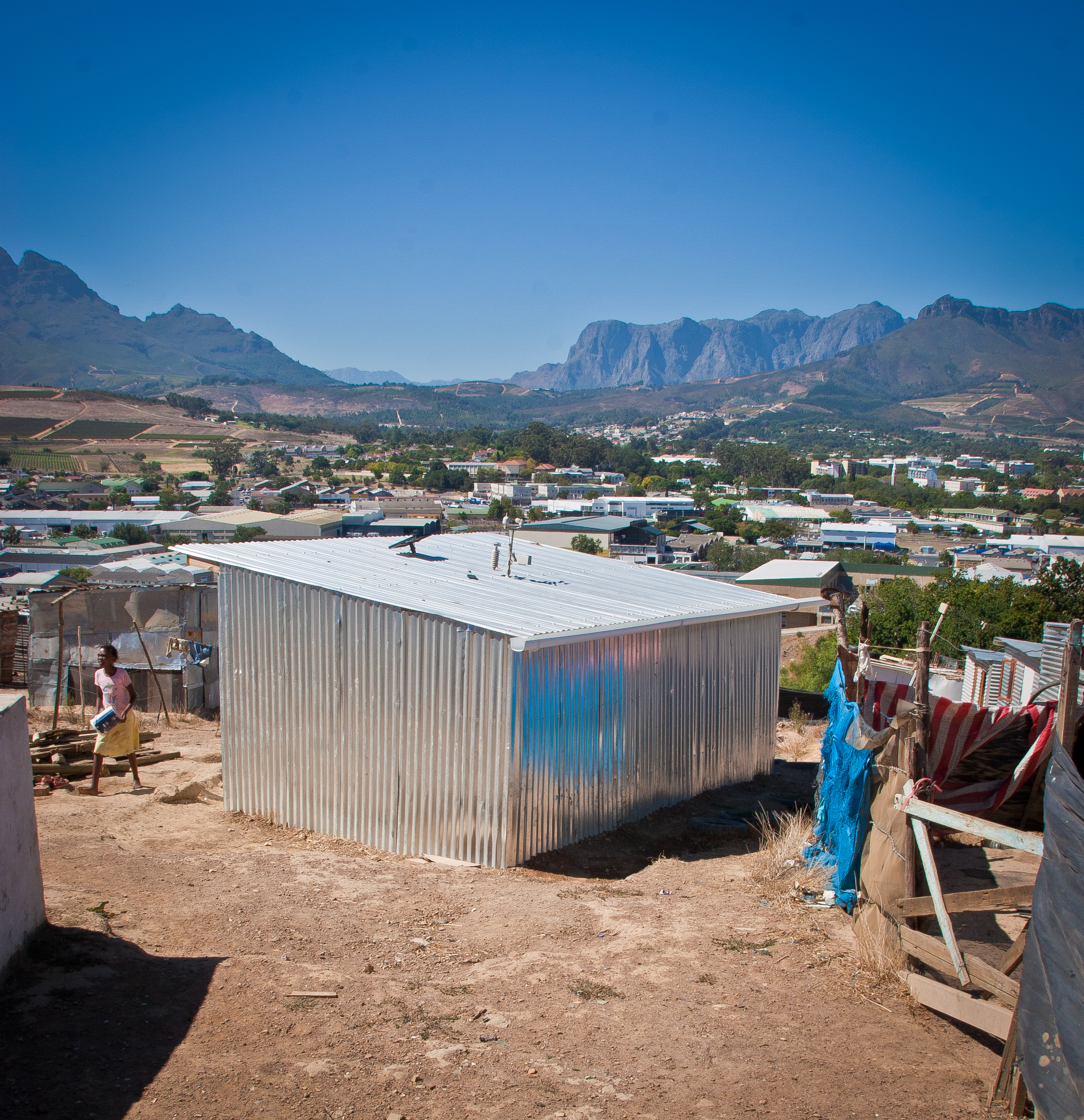An estimated 8 000 people who live in Enkanini, South Africa have had to rely on 36 taps, 60 toilets, no electricity, inadequate waste disposal and poverty stricken dwellings subject to floods and fires, inspiring the emergence of iShack, a sustainability project that utilizes solar power as a source of electricity.
The iShack is the result of an 18-month transdisciplinary research project by Stellenbosch University’s TsamaHub, an initiative of the HOPE Project, and the Sustainability Institute at Lynedoch outside Stellenbosch, in collaboration with the Stellenbosch Municipality.
The name iShack stands for “improved” shack as it entails cost-effective and sustainable modifications to the basic corrugated iron shack common in developing countries like that of Enkanini, Cape Town’s largest informal settlement with over 11,000 informal households in which families rely on communal services. Thus, this project has been designed to protect its occupants from extreme temperatures, and it features a solar panel for basic electricity needs, with rooftops slanted for rainwater harvesting that would cater for basic needs.
The project is the brainchild of Postgraduate students Ms Lauren Tavener-Smith, Mr Andreas Keller and Mr Berry Wessels stayed in Enkanini to collaborate with local residents on the design. Also involved in the project are the Informal Settlement Network (the local affiliate of Slum Dwellers International) and the Community Organisation Resource Centre. The iShack and the research around sanitation, water and waste is intended to contribute to the knowledge base around informal settlement upgrading.
“The materials and design were chosen based on affordability, accessibility and impact on thermal comfort,” Tavener-Smith doing her PhD in the economics of water upgrading in informal settlements, said in an interview.
The iShack has small photovoltaic panel on the roof for two interior lights, a motion sensitive exterior light and a cellphone charger. To maximise passive heating potential in winter, and provide shade in summer, the iShack is north-facing with a roof overhang while the windows are strategically placed on the north and east walls to let drafts in for better air circulation.
Indoors, a lining of disused cardboard boxes against the wall and roof is sprayed with fire retardant paint. Old long-life milk cartons are wedged between the cardboard and the zinc sheets for additional insulation notes Keller, who is doing his MPhil in Sustainable Development at the University’s School of Public Leadership (SPL).
The floor is made from bricks picked up at the nearby landfill site, and on one side there is a half wall made from mud and straw, which helps to smooth out temperature fluctuations.
“In the next phase we plan to introduce upgraded solar systems that can power household appliances,” Wessels, who is also doing his MPhil at the SPL said in an interview.
So far, Six Enkanini residents have been trained to install, operate, maintain and repair the iShack solar power system. It is envisaged that they will become energy entrepreneurs serving the community. Prof Mark Swilling, Professor in sustainable development at the SPL and Project Leader of the TsamaHub, noted that South African policy regarding human settlements has shifted from a once off housing intervention to an incremental approach of infrastructure upgrading.
However, partnerships between shack dwellers, local government and researchers is a requirement. Nevertheless, there are plans to scale up the project.
For more details, visit: www.thehopeproject.co.za/tsama


